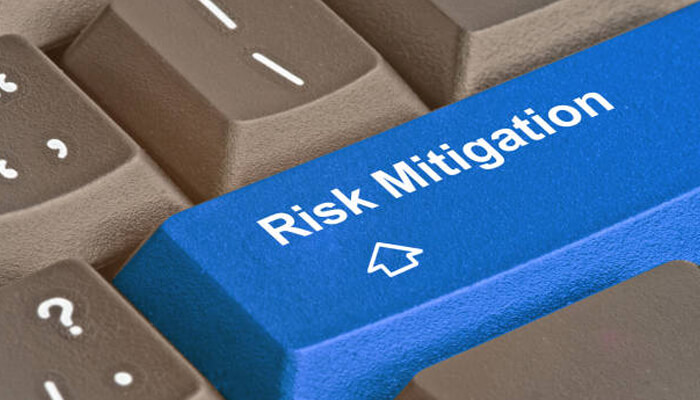A few weeks ago, the U.S. tech business industry was rocked by the sudden and unexpected closure of Silicon Valley Bank, which has been a key player and financial home to both major and minor technological and venture capital communities in the area. This has been called the “biggest bank failure since [the] global financial crisis,” and the greatest reminder that uncertainty is a constant reality for businesses and professionals, especially in today’s rapidly changing market landscape. Effective risk mitigation strategies are crucial for businesses to navigate uncertainty and ensure long-term success.
Thus, risk mitigation has once again become a hot topic for businesses and organizations, not just in the tech industry, but everywhere. With undeniable proof that even the biggest companies can fall, emphasizing the importance of risk mitigation and considering strategies to navigate through this uneasy time can help understand and prevent a similar situation from happening again.
Understanding Risk Mitigation in Uncertain Environments
There is a question that has to be answered first: What is risk mitigation?
Risk mitigation refers to the practice of identifying, assessing, and reducing potential risks that may negatively impact a business or professional. In relatively stabler markets, these potential dangers are minimized and often manageable for businesses. However, in more uncertain environments, risk mitigation strategies have become more of a priority as the presented risks are amplified and harder to predict.
These “risks” can range from internal risks such as operations and sales strategies to external ones such as market, legal, and reputation concerns. Economic downturns impact a business’s revenue and profitability, while supply chain disruptions affect the delivery of goods and services. Regulatory changes can result in increased costs and compliance issues, while reputational damage can have long-term consequences for sales and business longevity. Therefore, it is essential to guard against these potential issues to ensure the company’s success.
Strategies for Effective Risk Mitigation

- First, find out the possible issues the company might face in its environment and what the impact might be. To evaluate a business effectively, consider internal and external factors using tools like risk management frameworks and SWOT analysis. Identifying potential strengths, weaknesses, opportunities, and threats can also help the company, and choosing the appropriate tools that align with the company’s interests and resources is also a bonus.
- Identify potential risks
Staying up-to-date with industry trends and conducting regular risk assessments are inescapable factors for a business’s long-term success. Communication and transparency with stakeholders builds trust and ensures that everyone is working towards the same goals. Additionally, continuous monitoring for potential new issues allows for quick responses and proactive measures to mitigate risks and prepare for any challenges that may arise.
- Develop a risk mitigation plan
When creating plans for a project or initiative, utilize both online and internal company resources and involve all relevant stakeholders. Outline potential risks and develop specific steps to mitigate them, while remaining flexible and adaptable to changing circumstances. Involving key team members and stakeholders builds a cohesive team and increases the likelihood of success.
- Reduce risks related to litigation, compliance, and reputation
Court transcription can be a valuable tool for effective risk mitigation. By providing a detailed record of legal proceedings, court transcripts can help decrease risks associated with litigation, compliance, and reputation. Companies can analyze these transcripts to identify potential legal risks and develop strategies to reduce their impact, protect their brand name and reputation, and minimize the potential for costly legal disputes. LexTranscribe’s court transcription services provide highly reliable court transcripts that can help extract valuable insights, making them an excellent option for businesses seeking to mitigate their risks.
- Implement the risk mitigation plan
To mitigate risks effectively, adaptability and flexibility are crucial due to the constantly evolving business landscape. So staying updated on industry and regulatory changes is essential. Regularly revisiting and updating mitigation plans also secures their relevance and effectiveness. Effective communication and collaboration among relevant employees and stakeholders ensure that everyone is on the same page regarding changes to the plan.
These steps can increase resilience in uncertain environments and improve business success and longevity.
Case Studies: Examples of Successful Risk Mitigation in Uncertain Environments
Risk mitigation strategies can be used in any industry and in any situation. One of the most stark examples is during the worldwide COVID-19 pandemic which started in 2020. The healthcare industry in every country went up in arms immediately, placing protocols specific in each region that will protect children, families, and staff from infection and illness. The U.S. Department of Health & Human Services implemented a risk mitigation plan such as immunization programs, health check reminders, and hygiene tips that are applicable for all of its citizens. This shows a multifaceted approach that addresses all potential risks associated with the virus, and can be followed by all affected groups.
Risk mitigation can also work on a more personal, individual level. When it comes to finances, proper management is necessary to avoid possible loss of savings and to safeguard against sudden, unexpected life events that might need significant monetary investment. Forbes shares several tips on how to manage personal finances, including diversification, regular portfolio reviews, long-term planning, risk tolerance assessment, and financial advising. This urges a more proactive attitude, the creation of a comprehensive risk mitigation plan, and the value of a diversified portfolio when it comes to insuring finances.
Conclusion
Change is the only constant in the world. It is imperative to be prepared for whichever way the wind blows, especially when it comes to the market. When push comes to shove, businesses might find themselves sinking into the swamps of uncertainty, only finding failure at the bottom. So be ready for any business risk through thorough research, maintain constant communication in and out of the company, and adjust and accommodate created plans accordingly. No matter how solid the foundation seems to feel underneath, an earthquake might still come. However, if all goes well during preparations, in the end, it will be the company that will remain on its feet, ready for its future success.



